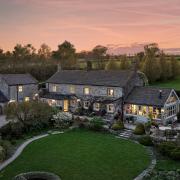Preserving a town’s character without losing its vitality is not easy, but Stokesley, on the edge of the North York Moors, seems to be up to the challenge.

It's a sad fact that many places still labelled as market towns lack what should qualify them as such - a market. Stokesley, however, has not just retained its weekly market, but has added another in keeping with the times.
'Along with our general market every Friday, a mixed market where you can buy food, clothes, DIY stuff and so on, we now have an award-winning farmers' market once a month on a Saturday,' explains Councillor Ian Blakemore. 'To get the atmosphere of the place, Friday is the best day to come for visitors new to the town.'
Stokesley has seen its share of development of late, but Ian is confident the essence of the place is unchanged. 'Because it's a market town with a true centre, the character can be retained more easily than, for example, with more linear places,' he says, and other changeless elements support his case. 'Only 100 yards out of the centre we have the River Leven running through, and the old packhorse bridge, very attractive and very tranquil for anyone who just fancies a stroll,' he adds.
With plenty of picturesque spots within the town, and beautiful surrounding countryside to inspire them, it's no surprise there's a thriving artists' group - Leven Art Society - based in Stokesley. 'We have 130 members, and a waiting list of more than 50, so we're in a healthy position,' says chairman Jim Miller. 'It's limited by space, we have to ensure that any of the members who want to attend one of our regular workshops can get in.'

As well as workshops held at Stokesley Town Hall and at various village halls in the district, they run an annual exhibition every May, and organise occasional expeditions outside their home area, though there is much nearby to fire creativity. 'Stokesley itself is full of character,' says secretary Roger Luntz. 'It's a fine market town, and the local area is very beautiful - we're close to the North York Moors, and the coast too, so there's plenty to inspire artists.' And being just 10 miles from Middlesbrough there's another source of inspiration the members can call on. 'Industrial Teesside itself is something that I and a number of our members enjoy capturing, so it's a real mixture,' says Jim.
The society doesn't just depict the beauty of the area, but can be said to have added to it recently. 'Last year we finished a mosaic mural for Stokesley Primary School,' says Jim Miller. 'They approached us to see if we could prepare a mural for the school, the previous one had been lost as that wall had to be taken down. The kids and teachers came up with a design, basically Stokesley High Street and its main public buildings, plus a Ferris wheel to represent the annual fair.' Expecting to paint an interior mural they ended up making an exterior mosaic, firing their own tiles and for many of them learning new skills in the 18-month process.
Their society will be 50 years old next year, but Stokesley Show, another way in which the town is keeping its unique identity, marks its 160th anniversary this year.
'The show was initially set up to provide somewhere for the local community to come together, and for local farmers to display their animals, and those things haven't changed,' says Janette Hugill, its secretary. 'The competition is intense, as the supreme prize money we offer is slightly higher than the Yorkshire show! We're an old-fashioned agricultural show in that we offer something for everybody in the 14 sections here, we've not just cherry picked the ones that are biggest attractions.'

The event - on September 21st - will once again offer local farmers the chance to show off their Angus and Limousin cattle, for which the area is known, alongside dairy produce, goats, horses, sheep, handicrafts, poultry, horticulture, pigeons, rabbits, ferrets, dogs… though perhaps the highlight for many of the 20,000 or so visitors is the show-jumping.
A local product food product that wasn't around when the show started, but is one of the big local employers now, is Quorn. 'Most people even in Stokesley are surprised when they realise the size of the business,' says Tim Finnigan, chief scientific advisor with Quorn Foods. 'We export to 17 countries worldwide now, and calculate that since the first product was launched in 1985 - a potato-topped pie for Sainsbury's - we have served more than five billion meals.'
The tiny fungi that turn starch into protein were discovered by a team created by Lord Rank, of Rank Hovis McDougall fame, when in the 1960s there were fears we would not be able to feed the rapidly expanding world population. The same fears, and the environmental and health impacts around intensive food production, have boosted business in recent years, and saw the company sold for £550 million in 2016.
The world is changing, and even though it is holding on to the best of its past, Stokesley is changing with it - and some of the additions making the place more attractive still. 'Since the Tour de Yorkshire came through the town a couple of years ago there has been a resurgence in cycling here,' says Ian Blakemore. 'It's a great place to come to cycle, and we have an excellent bike shop in Stokesley, and lots of cycle-friendly establishments.'
And a mile or so out in the countryside something new adds to the pleasure of walkers in the area too, as Ian explains: 'There's a nice walk to Great Ayton, which now has a new attraction on the way - a place that specialises in cake and gin and tonic!'



























